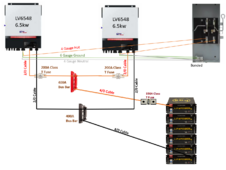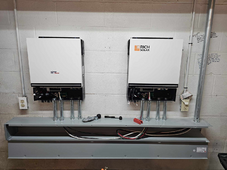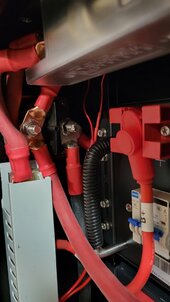I plan to have my two 4/0 battery cables running from the EG4 server rack in 1-1/2 conduit running to my wireway (and then up to each LV6548 inverter).
My questions are:
1. Where do I place the first 350A class T fuse and fuse holder (I assume within 12 inches of the positive EG4 Rack busbar - so inside the server rack?)
2. Do I put that fuse holder inside some sort of container to pass an inspection? Or do I just put leave the fuse holder laying inside the EG4 server rack enclosure.
3. How about the other bus bars for +/- batteries to each inverter and 200A class T fuses for each inverter. Do these sit inside my wireway, inside a box or something?


My questions are:
1. Where do I place the first 350A class T fuse and fuse holder (I assume within 12 inches of the positive EG4 Rack busbar - so inside the server rack?)
2. Do I put that fuse holder inside some sort of container to pass an inspection? Or do I just put leave the fuse holder laying inside the EG4 server rack enclosure.
3. How about the other bus bars for +/- batteries to each inverter and 200A class T fuses for each inverter. Do these sit inside my wireway, inside a box or something?






